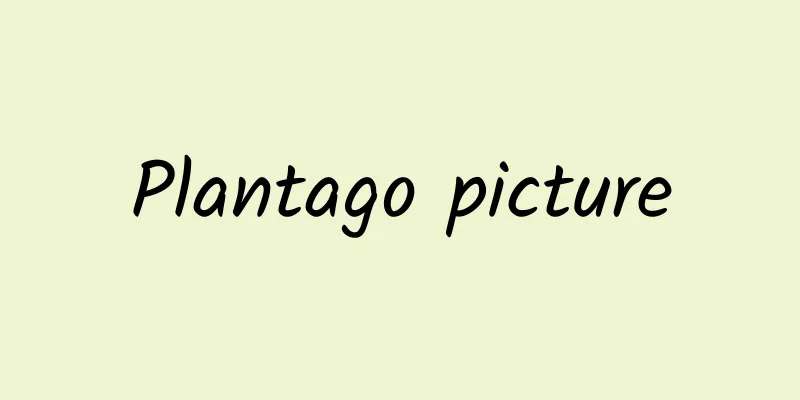Plantago picture

|
Salt plantain is another name for large truck plantain, plantain, flat plantain, sea plantain, and long-leaf plantain; the medicinal value of salt plantain is the dried perfect seeds of the plant plantain or flat plantain. When the seeds are ripe in summer and autumn, pick the flower spikes, dry them, rub out the seeds, and remove the residue. 1. Hard Salt Psyllium Source: The dried and perfected seeds of the perennial woody plant Plantain major. Green plant shape: The main stem is prominent and often has no branches. All leaves are basal, with a petiole that is 1/3 or shorter than the leaf length. The leaves are ovate-lanceolate, 4 to 11 cm long, with a pointed apex that is narrowed into a petiole, sparsely serrated and wavy edges, emerald green on the surface, and 5 to 7 arc-shaped tendonous parallel lines. The flowers are several branches in diameter and 10-30 cm high; the racemes are 1/2 or 1/3 of the branches; the flowers are light green and the siliques are cracked. There are usually 5 seeds, which are purple-black. Origin: Various provinces of China, the main producing areas are Heilongjiang Province, Liaoning Province, Hebei Province, etc., naturally found in mountains, roadsides, field ridges and small rivers. Characteristic identification: The seeds are oval or irregularly long and ring-shaped, 1-1.5 mm long and less than one millimeter wide, with one side slightly raised and the other side slightly flat. The surface is dark brown or purple-black. Observed under a dilating microscope, fine reticular patterns can be seen, and a small white dot (also known as an open eye) can be seen in the middle of the slightly convex area. It is hard, has a slight odor, a light taste, and is mucus-like when chewed. It is best to have round, purple-black, crystalline particles. 2. Large Salt Plantago Alias: Jiangche, Guanche. Source: The dried and perfect seeds of perennial woody plants in the base of the car. Plant shape: basically similar to the previous species, the main difference is that the main stem is not obvious, only roots. Reaching 50 cm, leaves are broadly elliptic, with long petioles, as tall as or taller than the leaves, with slightly expanded tips. There are several branches, 12~50 cm high. The silique contains 4 to 8 seeds, and is otherwise the same as Plantaine. Origin: The main producing areas are Jiangxi Province, Liaoning Province, Henan Province, Sichuan Province, etc., and it is distributed in all provinces of China. Characteristic identification: It looks similar to hard-grained psyllium. The only particle is very large, 2mm long and 1mm wide. Large, black grains with obvious milky white small grooves are preferred. Main ingredients: saline psyllium acid, psyllium succinate, and mucus. And contains a lot of mucus. Functions and effects: 1. Facilitates urination. It can enhance the metabolism of water, and also increase the metabolism of urea solution, sodium oxide and blood uric acid. However, some trials have been unable to confirm this efficacy. 2. Nourishing and healthy. It is slightly tonic, can be beneficial or tonic, the so-called "laxative without getting angry", can nourish yin and clear eyes, which may be related to the effect of the vitamin D compounds it contains. Chinese medicine preparation: Use raw or stir-fry in salt water. Poria cocos effects: sweet and cold. Meridians: Enter the liver, kidney, colon and lung meridians. Function: aromatic and dehumidifying, clearing away heat, detoxifying, clearing eyes, relieving cough and reducing phlegm. Indications: Gonorrhea, urinary retention, diarrhea due to summer heat and dampness, red and blurred eyes, and cough due to phlegm and heat. Clinical medical application: 1. Used to treat gonorrhea (acute urethritis, cystitis), it is used for its effects of promoting urination and clearing away heat and detoxification, and is often used in combination with Polygonum multiflorum and Schizonepeta tenuifolia. Both Bazheng Powder and Shiwei Powder use salt and plantain seeds. 2. Used to treat nephritic edema. Those who have difficulty urinating and have symptoms of kidney deficiency should take Jisheng Shenqi Pills with Achyranthes bidentata, Rehmannia glutinosa, Cornus officinalis, cinnamon powder, etc. 3. Used for ophthalmic diseases. It can nourish yin and blood when used in tonic medicine, and can purge excess when used in tonic and heat-clearing medicine. For example, the combination of Chuanxiong, Rehmannia glutinosa, Lycium barbarum, Cuscuta australis, etc. can nourish blood and qi and treat cataracts (senile cataracts), such as the Cross-talk Zhujing Pills. Combined with bupleurum, gentian, angelica root, chrysanthemum, etc., it can clear the accumulated heat in the liver meridian and treat cataracts in the eyes, blood-filled pupils, photophobia and excessive conjunctivitis (equivalent to herpes keratitis), such as Salt and Plantago seed powder. Dosage: 3~15g. When used as medicine, it should be decocted in a bag. It is suitable for stir-frying as it can help with dampness, and for making it tonifying, it is suitable for making it with wine. Examples of prescriptions: 1. Jisheng Shenqi Pills (Jisheng Fang): ready-made medicine, 9-12g each time, 1-2 times a day, swallowed with warm water. It would be better if it can be swallowed with a decoction of Scutellaria baicalensis and Codonopsis pilosula. If used as medicine, the following ingredients can be used: Chinese clematis 9g, salt plantain seed 12g (wrapped and decocted), yam 12g, Poria 12g, cooked rehmannia 24g, cornus fruit 9g, moutan bark 6g, oriental water plantain 9g, rutin 9g, cinnamon powder 3g (baked), decocted in water and taken orally. 2. Salt Plantain Seed Powder (from "Shenshi Yaohan"): Salt Plantain Seed, Buddismia, Notopterygium, Tribulus, Bupleurum, Chrysanthemum, Gentiana, Cassia, Licorice, grind into powder in equal parts, take 6g each time, with rice soup after meals. |
>>: The efficacy and function of Yibazhua
Recommend
AR Technology Part 2: Visiting the Hefei Advanced Light Source
The Hefei Advanced Light Source (HALF) is a fourt...
The efficacy and function of Magnolia officinalis
Since Chinese medicine has fewer side effects, mo...
Can women drink Chinese medicine during menstruation?
Although many people will choose Western medicine...
What is the appropriate ratio of Lingzhi to wine?
Ganoderma lucidum has been a precious Chinese med...
The efficacy and function of catalpa
As a traditional Chinese medicine, Catalpa ovata ...
The efficacy and function of Elaeagnus angustifolia flowers
Elaeagnus angustifolia flower is a very common Ch...
What are the effects of fruitless wolfberry bud tea
Many people may have heard of wolfberry, but not ...
The efficacy and function of throat cooling tea
In daily life, people are not only very familiar ...
The efficacy and function of black gland loosestrife
Most Chinese medicinal materials have good effect...
How can this mollusk make a comeback after losing its "family heirloom"?
Produced by: Science Popularization China Author:...
The "disappeared him" scene at the beach, the killer behind it is actually...
Audit expert: Yi Jingkun Zhihu famous geography a...
How was the “Grand Loop” in the desert built?
On June 16, 2022, the Hotan-Ruoqiang Railway (her...
The efficacy and function of Baile
Baile is a medicinal material that can treat many...
Unexplained childhood hepatitis appears in many countries! What exactly is hepatitis?
Mixed Knowledge Specially designed to cure confus...









